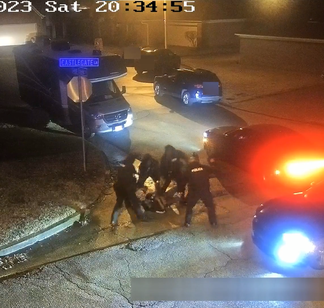The experts agree that the actions of the Memphis police officers were a blatant illustration of a widespread problem in policing, in which officers physically punish civilians for perceived disrespect or disobedience, a phenomenon known as “contempt of cop,”
By Stacy M. Brown
NNPA Newswire Senior National Correspondent
@StacyBrownMedia
Footage from Tyre Nichols’ fatal traffic stop found that police officers issued a barrage of confusing, conflicting, and sometimes impossible to obey commands.
If Nichols did not comply, or even if he did, the police would respond with increasing force.
According to the footage analyze by the New York Times, police officers shouted a total of at least 71 orders in the roughly 13 minutes before they radioed in that Nichols was in custody.
The orders were given in two separate places: one near Nichols’ vehicle, and another where he had run to avoid being beaten severely.
The video revealed that often the officers shouted conflicting orders, making it difficult for Nichols to understand and obey.
Nichols was ordered by officers to display his hand, even as officers held the young man’s hands.
At one point, they shouted for him to get down on the ground while he was already on the ground.
And when they had his body under their control, the officers still made him change positions.
The experts agree that the actions of the Memphis police officers were a blatant illustration of a widespread problem in policing, in which officers physically punish civilians for perceived disrespect or disobedience, a phenomenon known as “contempt of cop,” the Times reported.
Professor of criminology and criminal justice at the University of South Carolina Geoffrey Alpert said, “It was far more rampant in the ‘80s when I started doing police work than in the ‘90s or 2000s.”
Before body cameras, police officers were becoming more professional and less likely to take things personally, as appeared to have happened with Nichols, Alpert…
Read the full article here





